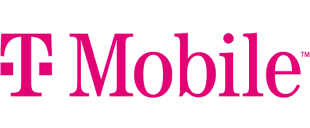Raju Chavan, Principal Architect, recognized the need to scale test automation to maintain a high-quality digital user experience for T-Mobile’s growing customer base. The T-Mobile team he supports is responsible for testing 52 applications, supporting multiple business units, including Retail, Digital, Care, Prepaid, and T-Mobile for Business.
“When I came on board, we had virtually zero test automation in place,” Chavan said.
The team evaluated a number of solutions and ultimately chose Tricentis Tosca and its low-code, model-based approach as the best solution for upskilling the company’s manual testers and quickly scaling test automation. One attribute that proved immediately beneficial was Tricentis Tosca’s ability to quickly design and build test cases through its AI-powered, low-code, model-based architecture.
By rapidly designing and reusing these test cases, Chavan found his team could automate numerous tedious small manual tasks, including opening the virtual retail stores automatically, creating test data request tickets, and updating Excel sheets with extracted data for reporting purposes. This ease of use proved its value in rapid adoption among the T-Mobile team, and they found over 300 team members becoming skilled Tosca users within the first year of usage.
The team leverages the test case design feature for rapidly estimating and automatically generating test cases that include test case name, preconditions, test case description, expected results, and verifications, transforming a normally hours long test design process into an easy and scalable process.
However, the team sought to unify test cases within Tosca further. He implemented team-wide policies to create hybrid (mix of manual and automated) test cases within Tosca alongside Tosca’s usual automated test cases to keep his team’s test cases consolidated in one repository. These hybrid tests, containing Tosca automation steps, can be automated outside the manual steps, which usually extend to manual-required verifications. The team also links all manual test cases created outside of Tosca within the Tosca test case repository to keep consistency across the QA organization’s test policies and standard best practices.
Within 8 to 10 months, the team found its testing strategy had achieved 0 – 60% automation throughout an extensive range of tools and applications, including T-Mobile.com and Salesforce.
The team took it a step further and built and modeled over 300 different possible customer business processes (sign up for prepaid service, add a user on an existing plan, change their rate plan) through Tosca instead of manually spending hundreds of hours provisioning for the myriad different possible customer journeys.
In the test planning phase before execution occurs, the team utilizes custom-built APIs called by Tosca’s rest APIs to automatically generate test data, enabling them to streamline the test data request (TDR) time by 50%.
The team leverages Tosca’s risk-based testing ability to identify a minimum number of test cases with maximum coverage that reduces their test scope into the high-value critical test areas, all while reporting a “very low” test failure rate with confidence.

 Industry: Telecommunications
Industry: Telecommunications Organization size: 75,000
Organization size: 75,000 Location: United States
Location: United States Products:
Products: 